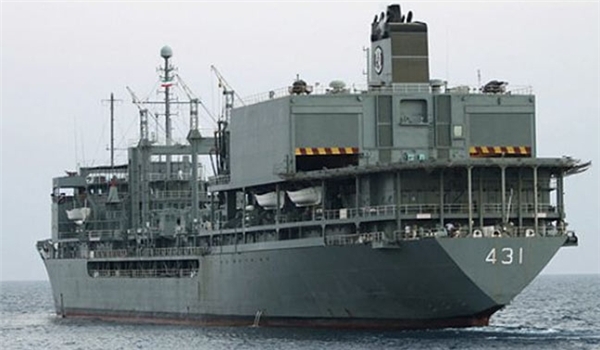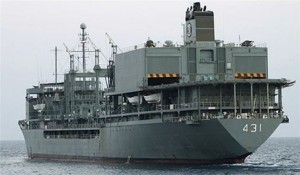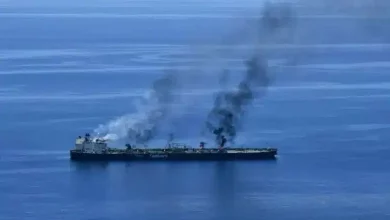Commander: Iran’s Fleet of Warships Arrives at Pakistan’s Karachi Port

 Iran’s flotilla of warships berthed at the Pakistani Karachi port to expand naval cooperation between the two friendly nations.
Iran’s flotilla of warships berthed at the Pakistani Karachi port to expand naval cooperation between the two friendly nations.
Commander of Iranian fleet First Captain Ali Jahanbakhsh said that the flotilla, comprising of four naval ships and a submarine, arrived at Karachi port on Friday and was warmly welcomed by the Pakistan Navy officers.
“The mission is aimed at enhancing defensive cooperation and interaction with the regional countries, particularly neighboring Pakistan,” Jahanbakhsh added.
He also noted that the Iranian fleet and Pakistani warships would conduct joint naval drills at the end of the mission.
According to the senior Iranian commander, the two navies had recently held similar drills in Iran’s Southern port city of Bandar Abbas.
By dispatching the fleet, the Iranian Navy pursues its defensive policies and displays its military might in the region and the world, the commander said, adding that one of the objectives of the naval trip is to train young officers and prepare them to counter any possible threat.
Early in April, Iran and Pakistan started their joint naval exercises in the Persian Gulf.
Iranian and Pakistani naval forces began their joint drills in the Eastern waters of the Strait of Hormuz with the message of peace and friendship.
In recent years, Iran’s Navy has been increasing its presence in international waters to protect naval routes and provide security for trade vessels and tankers.
The Islamic Republic has repeatedly asserted that its overseas naval presence is meant to convey a message of peace and friendship to other countries.
Iranian officials and commanders have repeatedly underlined that all military exercises and trainings of the Iranian Armed Forces are merely meant to serve deterrent purposes.
Late in December 2011, the Iranian Army’s Navy staged 10-day wargames, dubbed as Velayat 90, to test its latest achievements in the fields of missile technology and sub-surface vessels.
The wargames were conducted in an area stretching from the East of the Strait of Hormuz in the Persian Gulf to the Gulf of Aden.
During the drills, the Navy test-fired long-range missiles from coasts and navy vessels. Different types of short and long-range coast-to-sea, surface-to-surface, surface-to-air missiles were tested by Iranian vessels. Iranian submarines also launched smart torpedoes in the exercises.
Iran’s naval power has even been acknowledged by foes. In a Sep. 11, 2008 report, the Washington Institute for the Near East Policy said that in the two decades since the Iraqi imposed war on Iran, the Islamic Republic has excelled in naval capabilities and is able to wage unique asymmetric warfare against larger naval forces.
According to the report, Iran’s Navy has been transformed into a highly motivated, well-equipped, and well-financed force and is effectively in control of the world’s oil lifeline, the Strait of Hormuz.
The study said that if Washington takes military action against the Islamic Republic, the scale of Iran’s response would likely be proportional to the scale of the damage inflicted on Iranian assets.







